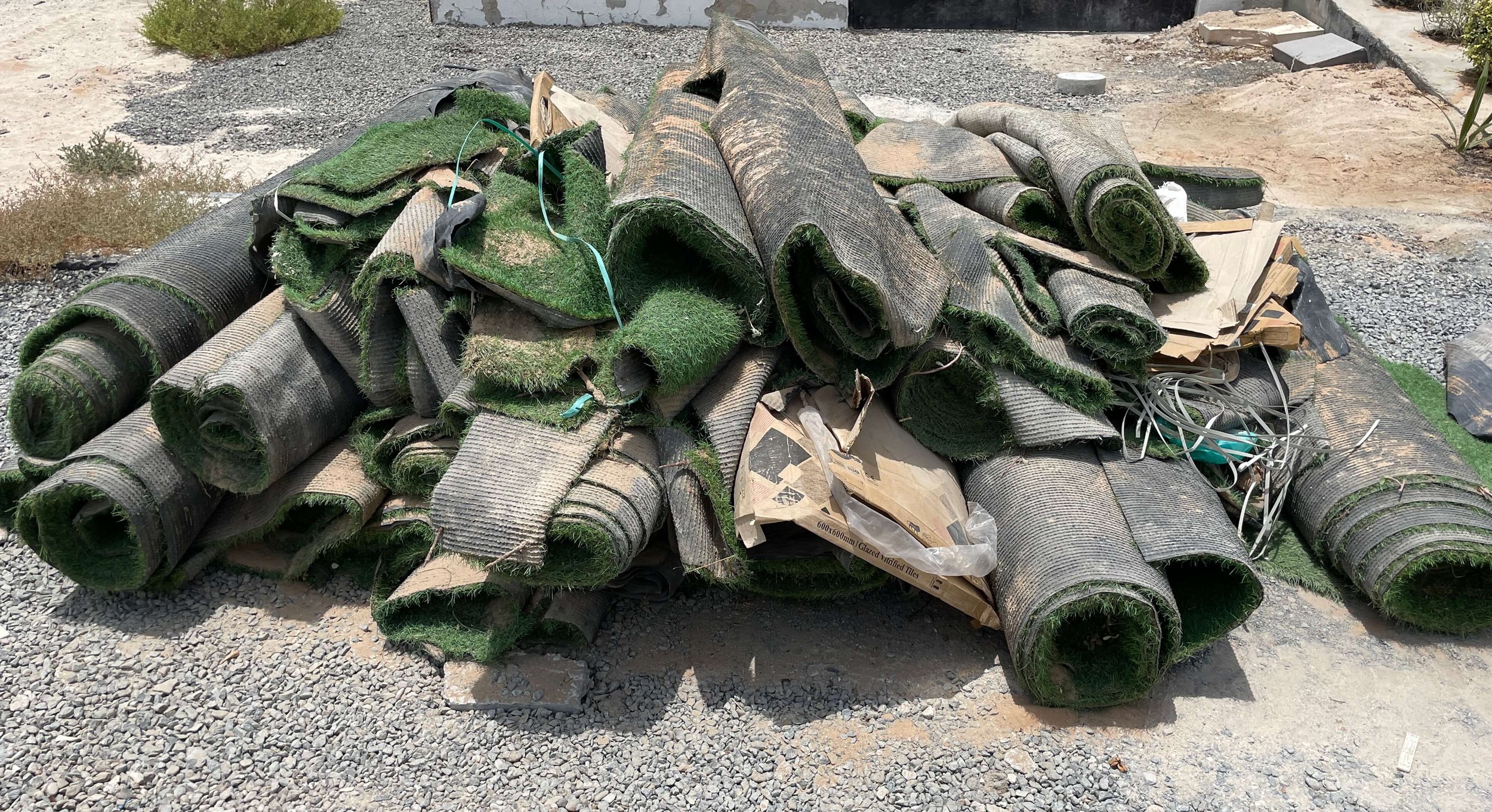lawns: the good, the bad, and the ugly
when people ask about real or artificial lawns, we often hear, “but real lawns use so much water; that’s not sustainable”.
exactly.
real lawns require constant maintenance—gallons of water, synthetic fertilisers, and pesticides—yet offer very little biodiversity. so, do you really need lawn?
let's explore the good, the bad, and the ugly side of grass, and some exciting alternatives.
the good
yes, real grass provides some benefits. it helps cool your outdoor space compared with hard surfaces, it supports a modest amount of biodiversity and is soft underfoot. ideal for barefoot walks, picnics, or playtime with pets and children.
the bad
our obsession with lawns dates back to 17th-century Europe, particularly England and France, where expansive, neatly trimmed grass was a status symbol for aristocrats. the trend spread, because it symbolised order and affluence, becoming a hallmark of suburban life in the 20th century.
for contemporary garden design in the UAE, the reality is that maintaining a lawn is water-intensive and time-consuming, and often with patchy or uneven results. lawns hold very low ecological value for your gardens becuase their roots are shallow and their biomass is very low, so they’re home to only a few insects and ground-feeding birds, if you’re lucky.
so, the question remains ’do you need a lawn at all?’. we get it, sometimes you really want a lawn for the kids to cartwheel, or your dog’s playtime. here’s what we suggest…
size it appropriately by testing the smallest space that you really need, and get the family involved by encouraging more natural play areas to compensate for a smaller lawn— consider mud play, climbing logs, or wall climbing features—to help shift their mindset and provide more dynamic and challenging play.
the ugly: artificial lawns
if real grass isn’t ideal, artificial grass is so much worse. while it may seem like a water-saving, low-maintenance alternative, artificial lawns come with hidden costs to the environment and your health. if this is news to you, don’t worry - 8 years ago I wrote an article and helped with a study in praise of artificial grass for how little water it required. so it’s okay to change your mind too.
for the sake of convenience, is it worth removing or limiting valuable living plants that clean and cool the air, replacing them with a plastic carpet? plastic that doesn’t degrade. plastic which overheats in the summer making it impossible to walk on (up to 75C and hotter than most stone). plastic that smells awful, that seals the earth’s natural surfaces, preventing water from entering the ground and suffocating the soil microbiome. worst of all, exposing children and pets to even more microplastics. Penn State University and other institutions have shown that artificial turf can reach temperatures up to 15°C higher than natural grass, contributing to heat stress in urban areas and increasing health risks.
as a result of numerous findings on its environmental impact and health risks, it’s no wonder governments and organisations, from the UK Society of Garden Designers and the RHS Chelsea Flower Show, to local Californian laws, are starting to ban it.
a better solution: more versatile spaces
there are far better options than lawn or artificial grass. on our recent trip to the Chelsea Flower Show, we saw 35 gardens and out of all these gardens, only one had a real lawn. and it was surrounded by an abundance of plants. this reflects the shift towards a more thoughtful use of space and a response to how garden culture is changing. people can sense the multitude of benefits that they, and their gardens, will enjoy by having more planting than grass.
if you don’t really need a lawn, why have one? instead, embrace more versatile, natural spaces that promote biodiversity, reduce water use, and provide more beauty. choose low ground covers and creeping plants if you want that low, lush carpet look. or, if you can swap lawn for climate adaptive species you’ll likely benefit the local ecology and attract pollinators such as birds, bees and butterflies. alternatively, if you need a practical space, consider free-draining locally-sourced gravel, and shade it with trees or a pergola to create a space that you can use all year.
finally, if you want to swap lawn for another kid’s play surface the best options are bark mulch, silica play sand, or pea gravel.
more plants, more nature
picture a garden bursting with life—vibrant plants of different textures, heights, and colours. a garden like this doesn't only look great; it contributes to a healthier environment and your overall well-being.
more plants mean cleaner air, better flood control, reduced erosion, and a haven for biodiversity. these spaces are more likely to inspire creativity in children and draw you outdoors, promoting exercise and relaxation.
our philosophy?
we’ll start with the assumption that most of the garden should be for planting and people so only have a lawn if you need it. if you do, size it based on how you’ll use it. surround it with plants, and make it part of the garden’s overall design, rather than a standalone feature.
Further Reading:


